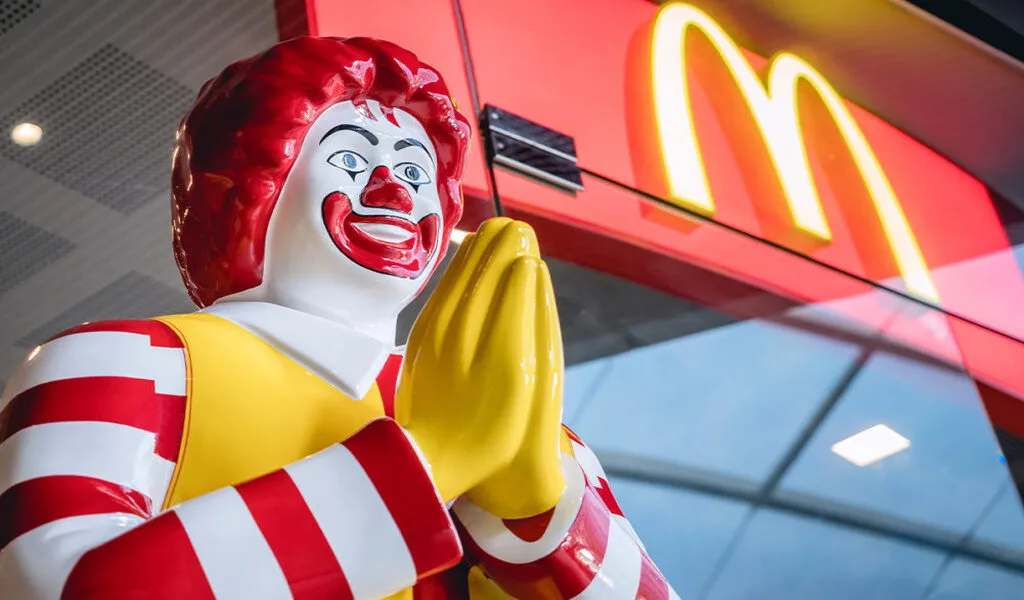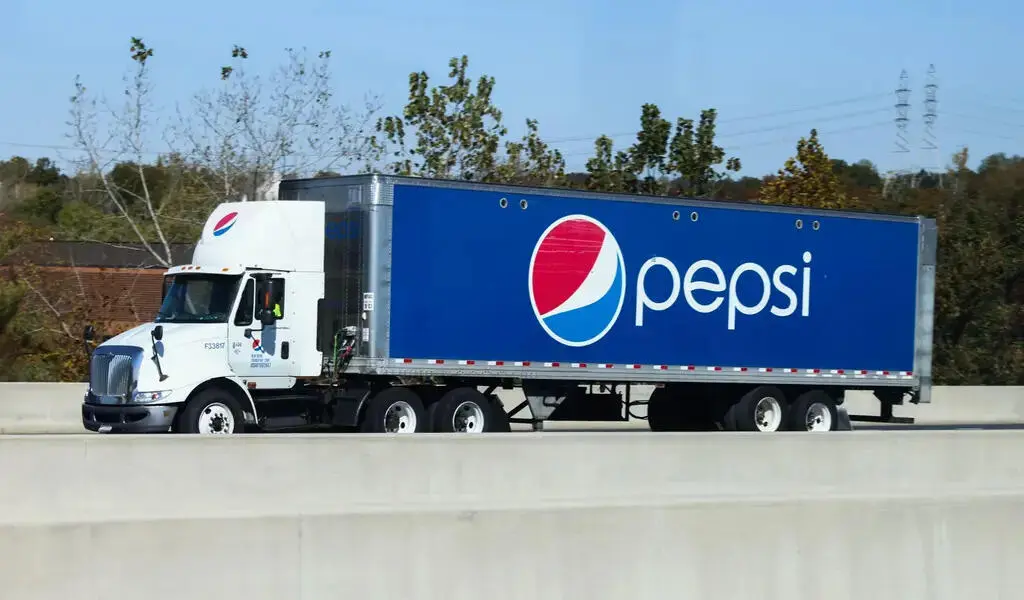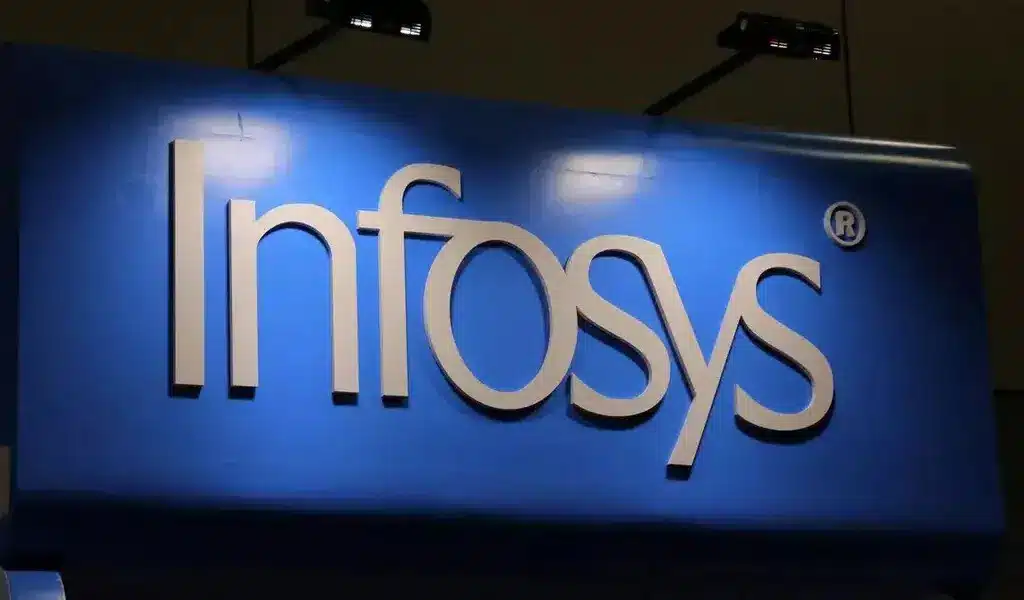Business
3 Distinct Trends Segregating Restaurant Companies into Victors And Underperformers

(CTN NEWS) – Amidst the complex web of challenges encountered during the second quarter, restaurant enterprises can be classified into two distinct groups: the triumphant and the less fortunate.
Several establishments revealed that their elevated menu prices had an adverse impact on patronage, whereas others maintained that consumer behavior exhibited steadfast constancy despite the escalating costs of victuals and libations.
The implementation of promotional strategies either enticed patrons towards particular eateries or failed to leave an impression, as discerning diners prioritized value.
Additionally, while some less affluent clientele displayed heightened patronage towards specific dining establishments, they chose to abstain from visiting other gastronomic venues.
Shifting Trends: Decline in Foot Traffic and Divergent Trajectories of Restaurant Chains
In a broader context, there has been a palpable decline in foot traffic to dining establishments. The momentum of sales growth has slackened, attributed to a deliberate postponement of further escalations in pricing, which was a driving force behind robust revenue figures witnessed a year ago.
Customers have adopted a discerning approach to their monetary expenditures, a meticulous scrutiny extending to their dining preferences, thereby accentuating the divergent trajectories charted by various restaurant chains.
Although the majority of restaurant enterprises exceeded earnings projections, a subset of them fell short of Wall Street’s expectations concerning their quarterly revenue figures.
The second quarter bore witness to exceptional financial performance from McDonald’s and Wingstop, as both corporations reported earnings, revenue, and same-store sales growth that outpaced analysts’ projections, an anomaly within this quarter’s context for restaurant establishments.
On the flip side, Papa John’s, Wendy’s, and Chipotle Mexican Grill stood amidst the cohort of companies that failed to satisfy investors with their sales figures, falling below anticipations. As of yet, the stock valuations of these three entities have not recuperated.
The ensuing are three distinct trends that fundamentally shaped the quarter’s dynamics, consequently delineating the chasm between those who emerged triumphant and those who found themselves in the less auspicious camp:
Restaurant Traffic
The trajectory of a company’s same-store sales growth is shaped by two pivotal metrics: the magnitude of each customer’s expenditure per order and the frequency of their visits to the restaurant chain.
In a climate where dining establishments defer further increases in pricing and patrons exercise cautious financial restraint, restaurants find themselves reliant on the latter metric—foot traffic—to fortify their same-store sales figures.
This dynamic is under intense scrutiny from the financial sector.
“As a gauge of a concept’s vitality, investors undoubtedly yearn for robust foot traffic,” remarked TD Cowen analyst Andrew Charles in conversation with CNBC.
Noteworthy among the limited few are McDonald’s, Chipotle, Texas Roadhouse, and Wingstop, which reported a surge in U.S. foot traffic during the latest quarter.
Conversely, Restaurant Brands International disclosed a decline in U.S. foot traffic for three of its banners: Popeyes, Burger King, and Firehouse Subs. Wendy’s, a rival contender, noted a 1% contraction in its domestic transactions during the second quarter.
Prospecting forward, the second half of the year could potentially witness an even steeper drop in foot traffic.
“Looking ahead to the latter part of 2023, the acceleration of menu price reduction is likely to outpace inflation’s influence on prices.
Unless an abrupt reversal in foot traffic materializes, the comparative figures are poised to exhibit a conspicuous decline,” articulated Barclays analyst Jeffrey Bernstein in an advisory message to clients on August 11.
“In our perspective, this projection does not augur well for the forthcoming performance of restaurant stocks in the subsequent months.”
Value Perception
While inflation’s intensity is waning and an increasing number of economists are prognosticating a “gentle descent” rather than a recession, consumers are persistently in search of value.
On a broad scale, the realm of fast-food has reaped the rewards of consumers transitioning from fast-casual eateries to more economical options such as burgers and tacos. However, the perception of value varies perceptibly among different restaurant chains.
Illustratively, Chris Kempczinski, CEO of McDonald’s, noted the chain’s commendable performance among consumers earning less than $100,000 annually, as well as those with incomes below $45,000.
In stark contrast, Wendy’s CEO Todd Penegor observed a reticence in diners earning less than $75,000, resulting in decreased patronage at the burger establishment.
Conversely, Wingstop reported an amelioration in its patrons’ perception of value, which coincided with a dip in chicken wing prices.
“In an environment where numerous brands are encountering a decline in value scores among guests, we are witnessing encouraging trends,” affirmed Michael Skipworth, CEO of Wingstop, during an analyst briefing.
Competing fast-casual contender Chipotle has also reaped benefits from the favorable perception of value associated with its burrito bowls.
CFO Jack Hartung conveyed that the establishment has observed an increase in the return of low-income consumers to its premises compared to the previous year.
Nonetheless, the frequency of visits by Chipotle’s low-income clientele has diminished in the wake of the acceleration of inflation. The chain has temporarily ceased implementing price hikes, deferring a decision on potential future increases until closer to the fourth quarter.
In contrast, one fast-casual chain has grappled with consumers’ assessment of its value proposition.
Noodles & Company experienced a drastic decline in foot traffic by double digits during the initial phase of the quarter, as patrons responded unfavorably to the elevated prices—a 13% increase from the corresponding period the prior year.
As a responsive measure, Noodles instated a 3% reduction in prices and realigned its marketing efforts towards an emphasis on value.
Promotions
In the ongoing pursuit of value, both dining establishments and patrons have placed significant emphasis on discounts and combo meals, capturing the spotlight in marketing endeavors.
Concurrently, the introduction of limited-time menu offerings played a pivotal role in augmenting sales for certain eateries, although it fell short in mitigating vulnerabilities for others.
At one end of the spectrum, McDonald’s orchestrated a notable feat. The launch of the Grimace Birthday Meal catalyzed fervent discussions across social media platforms, translating into heightened foot traffic at their establishments.
“In essence, the theme for this quarter was, to be candid, Grimace,” elucidated CEO Kempczinski during the company’s conference call.
The promotional campaign showcased the ephemeral purple Grimace milkshake alongside foundational menu selections, such as the choice between a 10-piece McNugget or a Big Mac. The campaign effectively harnessed nostalgia linked to the mascot’s legacy.
However, not all promotional ventures contributed positively to the financial performance of dining establishments.
For instance, Papa John’s introduced the Doritos Cool Ranch-flavored Papadias in May, priced at $7.99. The limited-time menu addition similarly generated significant traction on social media platforms and led to an upswing in foot traffic.
Nonetheless, the newfound Papadias contender proved insufficient in competing with the allure of the chain’s previously released pepperoni-stuffed crust pizza, unveiled a year prior at a price point of $13.99.
“The augmentation in foot traffic failed to counterbalance the reduction in average transaction value, thereby culminating in a decrement in same-store sales,” analyzed Peter Saleh, BTIG analyst, underscoring the nuanced dynamics at play.
RELATED CTN NEWS:
Australian Dollar’s Decline Against The US Dollar: Causes And Consequences Of Its Recent Downturn
Xi Jinping’s Vision For China’s Future: Cultivating Socialist Ideology And Long-Term Focus
Russian Ruble’s Odyssey Through Conflict And Economic Choices: Central Bank’s Intervention Plan

Business
PepsiCo Reduces Revenue Projections As North American Snacks And Key International Markets Underperform.

(VOR News) – In the third quarter of this year, Pepsi’s net income was $2.93 billion, which is equivalent to $2.13 per share. This was attributed to the company.
This is in stark contrast to net income of $3.09 billion, which is equivalent to $2.24 per share, during the same period in the previous year. The company’s earnings per share were $2.31 when expenses were excluded.
Net sales decreased by 0.6%, totaling $23.32 billion. Organic sales increased by 1.3% during the quarter when the effects of acquisitions, divestitures, and currency changes are excluded.
Pepsi’s beverage sales fell this quarter.
The most recent report indicates that the beverage and food sectors of the organization experienced a 2% decline in volume. Consumers of all income levels are demonstrating a change in their purchasing habits, as indicated by CEOs’ statements from the previous quarter.
Pepsi’s entire volume was adversely affected by the lackluster demand they encountered in North America. An increasing number of Americans are becoming more frugal, reducing the number of snacks they ingest, and reducing the number of times they purchase at convenience stores.
Furthermore, Laguarta observed that the increase in sales was partially attributed to the election that occurred in Mexico during the month of June.
The most significant decrease in volume was experienced by Quaker Foods North America, which was 13%. In December, the company announced its initial recall in response to a potential salmonella infection.
Due to the probability of an illness, the recall was extended in January. Pepsi officially closed a plant that was implicated in the recalls in June, despite the fact that manufacturing had already been halted.
Jamie Caulfield, the Chief Financial Officer of Pepsi and Laguarta, has indicated that the recalls are beginning to have a lessening effect.
Frito-Lay experienced a 1.5% decline in volume in North America. The company has been striving to improve the value it offers to consumers and the accessibility of its snack line, which includes SunChips, Cheetos, and Stacy’s pita chips, in the retail establishments where it is sold.
Despite the fact that the category as a whole has slowed down in comparison to the results of previous years, the level of activity within the division is progressively increasing.
Pepsi executives issued a statement in which they stated that “Salty and savory snacks have underperformed year-to-date after outperforming packaged food categories in previous years.”
Pepsi will spend more on Doritos and Tostitos in the fall and winter before football season.
The company is currently promoting incentive packets for Tostitos and Ruffles, which contain twenty percent more chips than the standard package.
Pepsi is expanding its product line in order to more effectively target individuals who are health-conscious. The business announced its intention to acquire Siete Foods for a total of $1.2 billion approximately one week ago. The restaurant serves Mexican-American cuisine, which is typically modified to meet the dietary needs of a diverse clientele.
The beverage segment of Pepsi in North America experienced a three percent decrease in volume. Despite the fact that the demand for energy drinks, such as Pepsi’s Rockstar, has decreased as a result of consumers visiting convenience stores, the sales of well-known brands such as Gatorade and Pepsi have seen an increase throughout the quarter.
Laguarta expressed his opinion to the analysts during the company’s conference call, asserting, “I am of the opinion that it is a component of the economic cycle that we are currently experiencing, and that it will reverse itself in the future, once consumers feel better.”
Additionally, it has been noted that the food and beverage markets of South Asia, the Middle East, Latin America, and Africa have experienced a decline in sales volume. The company cut its forecast for organic revenue for the entire year on Tuesday due to the business’s second consecutive quarter of lower-than-anticipated sales.
The company’s performance during the quarter was adversely affected by the Quaker Foods North America recalls, the decrease in demand in the United States, and the interruptions that occurred in specific international markets, as per the statements made by Chief Executive Officer Ramon Laguarta.
Pepsi has revised its forecast for organic sales in 2024, shifting from a 4% growth rate to a low single-digit growth rate. The company reiterated its expectation that the core constant currency profitability per share will increase by a minimum of 8% in comparison to the previous year.
The company’s shares declined by less than one percent during premarket trading. The following discrepancies between the company’s report and the projections of Wall Street were identified by LSEG in a survey of analysts:
SOURCE: CNBC
SEE ALSO:
Old National Bank And Infosys Broaden Their Strategic Partnership.
Business
Old National Bank And Infosys Broaden Their Strategic Partnership.

(VOR News) – Old National Bank, a commercial bank with its headquarters in the Midwest, and Infosys, a firm that specializes in information technology, have recently entered into a strategic expansion of their link, which has been in place for the past four years.
This expansion is more likely to take place sooner rather than later, with the likelihood being higher.
For the purpose of making it possible for Old National Bank to make use of the services, solutions, and platforms that are offered by Infosys, the objective of this expansion is to make it possible for the bank to transform its operations and processes through the application of automation and GenAI, as well as to change significant business areas.
This lets the bank leverage Infosys’ services, solutions, and platforms.
Old National Bank Chairman and CEO Jim Ryan said, “At Old National, we are committed to creating exceptional experiences for both our customers and our fellow employees.”
This statement is applicable to Old National Bank. Infosys is carefully managing the business process innovations that it is putting us through, putting a strong emphasis on efficiency and value growth throughout the process to ensure that it is carried out efficiently.
This is a routine occurrence throughout the entire operation. Because of Infosys’ dedication to our development and success, we are incredibly appreciative of the assistance they have provided.
Old National has been receiving assistance from Infosys in the process of updating its digital environment since the year 2020, according to the aforementioned company.
Ever since that time, the company has been providing assistance. The provision of this assistance has been accomplished through the utilization of a model that is not only powerful but also capable of functioning on its own power.
Infosys currently ranks Old National thirty-first out of the top thirty US banks.
This ranking is based on the fact that Old National is the nation’s largest banking corporation.
It is estimated that the total value of the company’s assets is approximately fifty-three billion dollars, while the assets that are currently being managed by the organization are valued at thirty billion dollars.
Dennis Gada, the Executive Vice President and Global Head of Banking and Financial Services, stated that “Old National Bank and Infosys possess a robust cultural and strategic alignment in the development, management, and enhancement of enterprise-scale solutions to transform the bank’s operations and facilitate growth.”
This remark referenced the exceptional cultural and strategic synergy between the two organizations. Dennis Gada is the one who asserted this claim. This was articulated explicitly concerning the exceptional cultural congruence and strategy alignment of the two organizations.
We are pleased to announce that the implementation of Infosys Topaz will substantially expedite the transformation of Old National Bank’s business processes and customer service protocols. We are exceedingly enthusiastic about this matter. We are quite thrilled about this specific component of the scenario.
Medium-sized banks operating regionally will continue to benefit from our substantial expertise in the sector, technology, and operations. This specific market segment of Infosys will persist in benefiting from our extensive experience. This phenomenon will enable this market sector to sustain substantial growth and efficiency benefits.
SOURCE: THBL
SEE ALSO:
American Water, The Largest Water Utility In US, Is Targeted By A Cyberattack
States Sue TikTok, Claiming Its Platform Is Addictive And Harms The Mental Health Of Children
Qantas Airways Apologizes After R-Rated Film Reportedly Airs On Every Screen During Flight
Business
American Water, The Largest Water Utility In US, Is Targeted By A Cyberattack

The largest regulated water and wastewater utility company in the United States stated Monday that it had been the target of a cyberattack, forcing the company to halt invoicing to consumers.
American Water, The Largest Water Utility In US, Is Targeted By A Cyberattack
American Water, based in New Jersey and serving over 14 million people in 14 states and 18 military facilities, said it learned of the unauthorized activity on Thursday and quickly took precautions, including shutting down certain systems. The business does not believe the attack had an impact on its facilities or operations and said employees were working “around the clock” to determine the origin and scale of the attack.

According to their website, American Water operates over 500 water and wastewater systems in around 1,700 communities across California, Georgia, Hawaii, Illinois, Indiana, Iowa, Kentucky, Maryland, Missouri, New Jersey, Pennsylvania, Tennessee, Virginia, and West Virginia.
SOURCE | AP
-

 News4 years ago
News4 years agoLet’s Know About Ultra High Net Worth Individual
-
Entertainment2 years ago
Mabelle Prior: The Voice of Hope, Resilience, and Diversity Inspiring Generations
-
News11 years ago
Enviromental Groups Tell Mekong Leaders Lao Dam Evaluation Process Flawed
-

 Health4 years ago
Health4 years agoHow Much Ivermectin Should You Take?
-

 Tech3 years ago
Tech3 years agoTop Forex Brokers of 2023: Reviews and Analysis for Successful Trading
-

 Lifestyles3 years ago
Lifestyles3 years agoAries Soulmate Signs
-

 Entertainment3 years ago
Entertainment3 years agoWhat Should I Do If Disney Plus Keeps Logging Me Out of TV?
-

 Health3 years ago
Health3 years agoCan I Buy Ivermectin Without A Prescription in the USA?